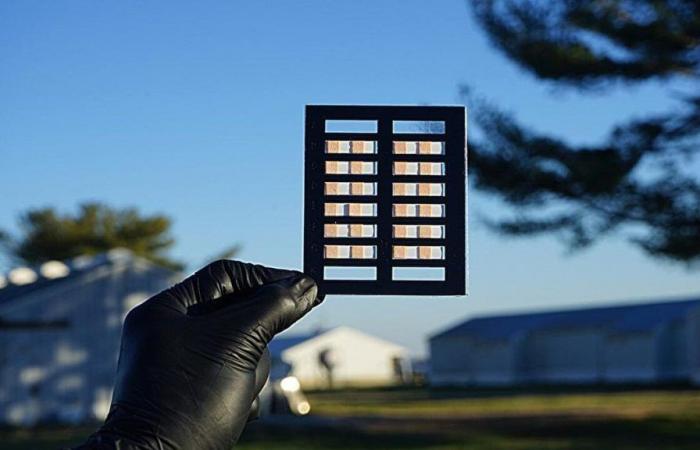06/22/2024 at 08:01
CEST
Can an agricultural crop be contaminated by fecal waste coming from a nearby livestock farm? US researchers have discovered a simple and reliable method that allows measure the presence of pathogens in plants in the same field. This is a new technology biosensorsportable and easy to handle, inspired in turn by another discovery made during the Covid 19 pandemic. The tests have given results with 100% accuracy just one hour after collecting samples in a culture.
“The method we have adopted is to use a fecal indicator called bacteroidales as a risk marker“explained Mohit Verma, an associate professor of agricultural and biological engineering at Purdue. Verma and his team published their findings in the journal Biosensors and Bioelectronics.
“The objective was to estimate what risks could exist in the production of fresh products due to the livestock existence or nearby wild animals,” said Verma. Normally, this detection is done by measuring the pathogens that may be present in the crops. If present, such agricultural products are discarded for marketing. But the detection of pathogens at low levels, such as and as regulatory requirements for perishable products require, it is complicated.
The technology used by this team of researchers is called loop-mediated isothermal amplification (LAMP) and has been implemented on paper-based devices that allow obtaining quick results in agricultural uses. Previously, Verma’s team had already developed this same system to detect bovine respiratory disease and COVID-19.
“To our knowledge, this work represents the first demonstration of a portable LAMP test platform put into practice in a fresh produce crop,” the co-authors wrote in their journal article.
Bacteroidales are a fecal organism found in pigs, poultry and cattle. Most pathogens transmitted by fresh produce, including E. coli and salmonella, originate in the intestines.
Plastic flags as detectors
The Purdue University team tested the system in a lettuce crop in California and another field in Indiana. Specifically, microbial samples were collected using small plastic flags that had been distributed at various points in these crops.
These little flags collected bioaerosol samples for a week and were then taken to the laboratory for quantitative polymerase chain reaction testing. “This allows us to measure the bacteriodals and, therefore, the level of fecal contamination,” said the researcher.
But with the test kit that completes the equipment and consists of a drop dispenser, paper devices and a heating chamber, Farmers can carry out the entire process directly in the field.
The collection flag is sprayed with a liquid containing the compounds necessary to detect DNA from the samples. The paper device is then passed into a heating chamber. An hour later, the device reveals how many bacteriodals are present. This method provides reliable results that confirm what producers, upon visual inspection, often intuitively suspect is happening in their fields.
The results of tests carried out in the field They coincided 100% with the laboratory results. These were samples that included very low or very high concentrations of contamination.
Low levels of Bacteroidales indicate that the crop in question is in a low-risk location. On the contrary, high levels indicate the need to take precautions. High levels of contamination would be 1,000 copies of DNA per square centimeter found on a test pad, and one copy would correspond to one cell from any of a broad class of bacteria. Low levels would correspond to 10 copies per square centimeter.
“The biggest limitation is that we still don’t really know what these numbers mean,” Verma said. “What happens in the middle? Where do we set the threshold? That’s part of the work in progress,” she added.
Reference study: https://www.sciencedirect.com/science/article/pii/S0956566324003798?via%3Dihub
………………
Contact of the Environment section: [email protected]


